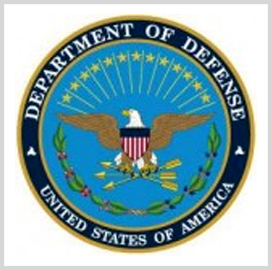
President Donald Trump intends to nominate J. David Patterson, senior vice president of strategic business opportunities at management consulting firm SMA, to be principal deputy undersecretary for personnel and readiness at the Department of Defense.
Patterson is a retired U.S. Air Force colonel who previously served as an executive at Boeing and at the University of Tennesee’s National Defense Business Institute, the White House said Monday.
He also leads joint development agreement partnerships at N12 Technologies’ North American arm and is a managing partner at Castlebridge Keep.
Earlier in his career, he worked at DoD as principal deputy undersecretary for comptroller and special assistant to the deputy defense secretary. He served as an Air Force pilot between 1970 and 1993.





